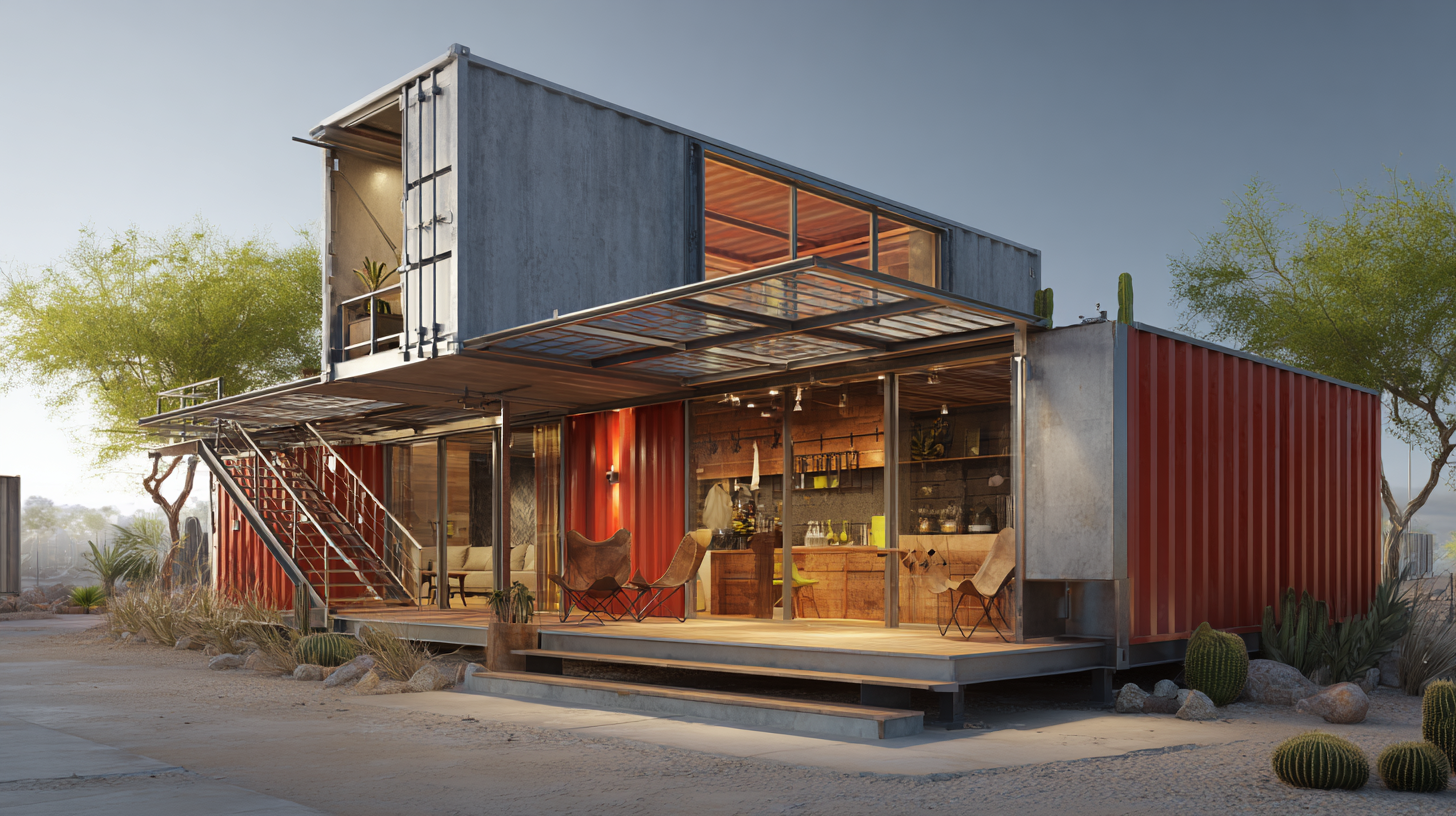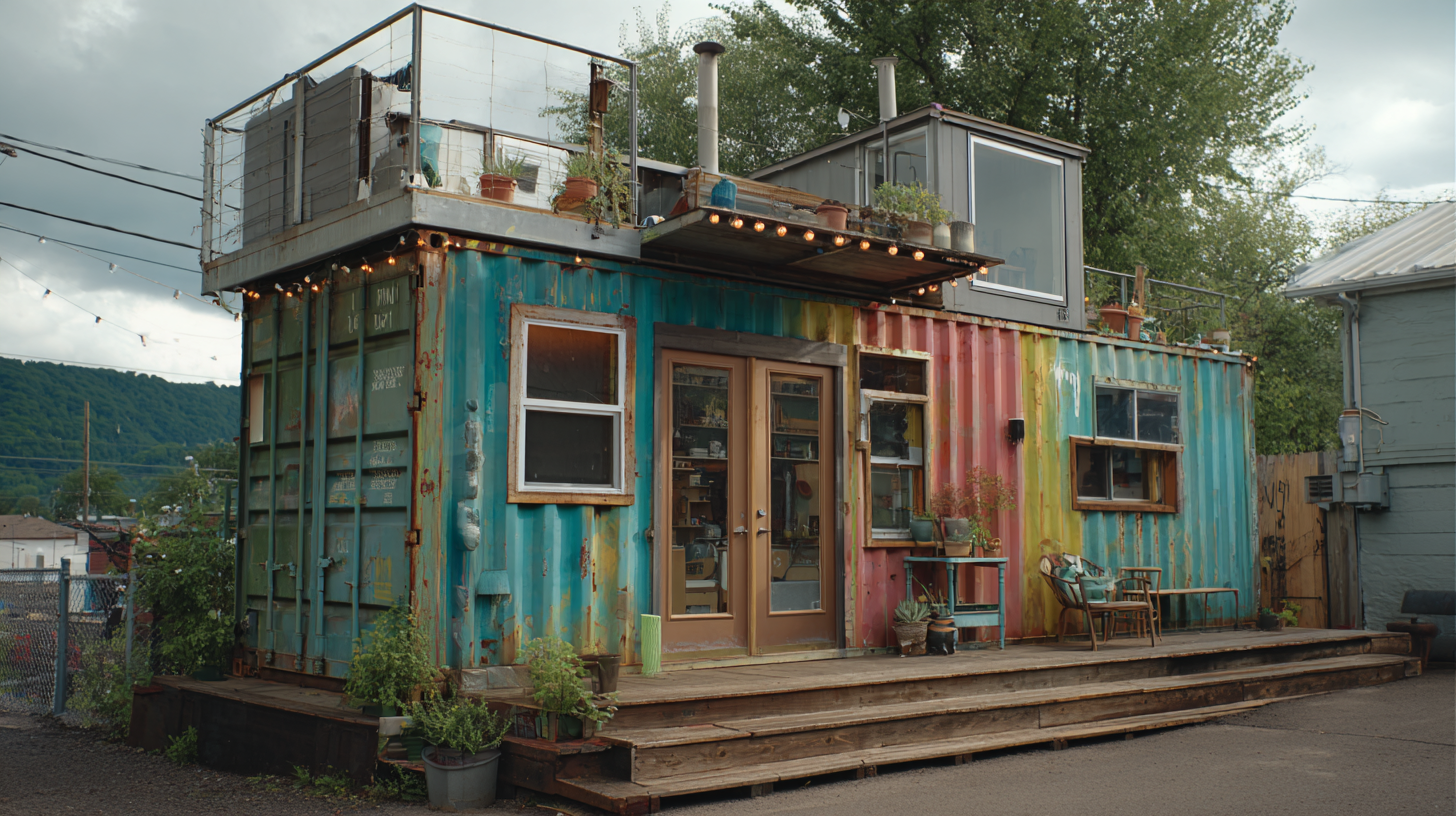In the face of escalating urbanization and the pressing need for sustainable living solutions, “container conversions” have emerged as a transformative approach to reimagining spaces. According to a report from the World Economic Forum, the global construction industry is responsible for nearly 40% of carbon emissions, highlighting the urgency for innovative building methods that minimize environmental impact. Container conversions not only repurpose unused shipping containers but also significantly reduce material waste and energy consumption compared to traditional construction. By 2030, it's projected that the market for sustainable building practices, including container conversions, could exceed $150 billion, driven by both consumer demand for eco-friendly alternatives and regulatory pressures on sustainable practices. This guide will explore the multifaceted benefits of container conversions, providing insights and inspiration for those looking to embrace sustainable living through creative spatial design.

Container conversions represent a fascinating approach to sustainable living, using shipping containers as the foundation for innovative housing solutions. This method not only repurposes idle resources but also minimizes waste and reduces the demand for traditional construction materials. By transforming these steel boxes into livable spaces, individuals and communities can achieve functional and stylish environments that are both affordable and environmentally friendly.

Understanding container conversions entails examining the various design possibilities and benefits of this transformative approach. Spaces created from containers can be tailored to meet diverse needs, from cozy homes to functional offices or community centers. Each converted unit can incorporate energy-efficient systems, such as solar panels and rainwater harvesting, further enhancing their sustainability. As interest in eco-friendly living grows, container conversions serve as a compelling alternative, offering a creative solution to contemporary housing challenges while promoting a greener future.
Container living has emerged as a compelling alternative to traditional housing, offering a range of benefits that align with sustainable living practices. One of the most significant advantages is its eco-friendliness. Repurposing shipping containers reduces the demand for new materials, minimizing waste and the environmental footprint commonly associated with construction. Additionally, containers are often designed to be energy-efficient, making them ideal for those looking to reduce their carbon emissions while enjoying modern comforts.
Cost-effective solutions are another key aspect of container living. The initial investment for purchasing and converting a shipping container is often considerably lower than that for conventional housing. This affordability allows for creative freedom in design and customization, enabling homeowners to tailor their spaces according to individual needs and tastes without breaking the bank. Furthermore, containers can be arranged in various configurations, providing versatile living spaces that can adapt to different lifestyles, whether as single-family homes, multi-unit dwellings, or even pop-up businesses.
Container homes have emerged as a creative solution for sustainable living, with innovative design ideas that maximize space utilization. One effective approach is the integration of multi-functional furniture, which can serve various purposes while minimizing clutter. For example, a foldable bed can transform a living space into a cozy bedroom at night, and then be easily tucked away during the day to create an open area for activities or socializing. Additionally, modular storage solutions, such as built-in shelves or movable cabinets, can help residents keep their belongings organized without sacrificing style.

Another powerful design strategy is the use of vertical space. By incorporating wall-mounted features, such as hanging gardens or storage racks, container homes can utilize every inch effectively. This not only enhances the aesthetic appeal but also promotes a sense of openness. Large windows and skylights can further amplify this feeling, inviting natural light and creating a connection with the outdoors. These design innovations not only make container homes more livable but also encourage a lifestyle that embraces minimalism and eco-friendliness, aligning perfectly with the principles of sustainable living.
Container conversion presents unique challenges and solutions in the context of sustainable living. One major challenge is ensuring that the materials used in conversions align with sustainability goals. It is vital to select eco-friendly insulating materials and finishes that minimize the environmental impact while enhancing the durability and efficiency of these living spaces. Furthermore, addressing local zoning laws and building codes can pose significant hurdles, as regulations may not always accommodate innovative housing solutions like converted containers. Collaborative efforts between architects, city planners, and communities are essential to navigate these legal landscapes effectively.
Additionally, there are innovative approaches to repurpose materials that often go to waste. For instance, integrating upcycled elements into container homes not only reduces waste but also promotes a circular economy. Encouraging the use of sustainable energy sources such as solar panels can further enhance the appeal and functionality of these structures. Ultimately, successful container conversion projects hinge on addressing these multifaceted challenges while fostering community involvement and awareness about sustainable living practices, thus paving the way for a greener urban future.
The trend of container conversions is gaining momentum as communities look for innovative and sustainable living solutions. One notable example is the transformation of shipping containers into affordable housing units in urban areas facing housing shortages. Cities like Austin and Amsterdam have embraced this concept, creating vibrant neighborhoods that not only utilize repurposed materials but also foster a sense of community among residents. These container homes often feature energy-efficient designs and sustainable materials, making them an eco-friendly choice for those seeking housing options.
In addition to residential uses, container conversions have also found a place in educational and commercial settings. Schools in underserved areas have utilized these structures to create classrooms that are both functional and engaging for students. Meanwhile, businesses are turning to container cafés and pop-up shops that add unique character to local districts. This trend demonstrates not only the versatility of container conversions but also their ability to spark economic development and social cohesion within communities. As more success stories emerge, the potential of container conversions to address various societal needs continues to grow.


